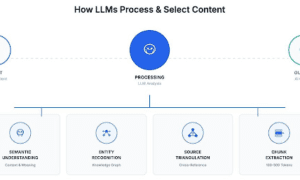Content sites were arguably one of the big winners of COVID-19. With so many of us trapped indoors by lockdown measures, we spent more time online than ever before. As a result, our hunger for new content to consume exploded, from streaming video to blog posts to infographics.
Although this fervor will die down as things gradually return to normal — or whatever passes as normal now — the outlook for content sites is still positive. People want to be entertained and informed. That hasn’t changed, nor will it.
So a well-performing content site is probably a sound investment. What about one where the majority of content is user-generated? Should you put your money towards acquiring one, or would it be better to simply hold off?
Types of User-Generated Content
User-generated content comes in multiple flavors, but typically falls into one of the following categories:
- Reviews/testimonials
- Photos
- Video
- Discussion threads
- Social media posts
- Blog posts
The Power of User-Generated Content
As anyone who’s spent even a little time in the marketing sector, user-generated content is one of the most valuable brand awareness tools in any business’s arsenal. That’s because rather than being filtered through the lens of a faceless business, it’s created by that business’s audience. This makes it instantly more relatable and has a high likelihood of generating conversation, interest, and engagement.
As noted by digital marketing agency Power, there are a few reasons for this.
- User-generated content is created for free by a brand’s audience. Paid promotions generally fall under the purview of influencer marketing.
- People are far more willing to trust someone who hasn’t been compensated by a brand in any way, shape, or form, as they don’t gain anything from talking up the brand.
- It’s easy to ignore a paid advertisement. You’ve probably overlooked several today alone. It’s much more challenging to ignore promotional content created by one of your peers, however.
Examples of User-Driven Content Sites
The question remains of whether it’s possible to build an entire business on such content. Indeed, relying on your audience to build up a content base is an excellent idea from a social marketing standpoint. But can it be the foundation of an effective business?
To answer that, let’s look at a few of the best-known user-driven content sites.
YouTube
As the world’s largest video sharing platform, YouTube makes most of its profits from advertising revenue. It also generates income from subscription services such as YouTube Red, which allows a user to view the site without ads. Top YouTube influencers are known to take home seven figure salaries.
Yelp
Yelp is one of the leading online review platforms geared entirely towards local businesses. As of the end of last year, the site hosted over 224 million reviews. Yelp’s has a three-tiered monetization strategy:
- Targeted advertising
- The Yelp Partner Program
- Subscription fees for value-added tools
Billing itself as the front page of the Internet, Reddit hosts discussion forums about virtually any topic you can think of (within reason). Most of the ~$100 million in revenue comes from the company’s ad sales. That said, as reported by Quartz, CEO Steve Huffman is exploring alternative monetization strategies, such as a premium, ad-free version of the site and virtual coinage.
Quora
If you have a question, Quora probably has an answer. The Q&A site is entirely community-driven, with a user-base that includes thought leaders, celebrities, and influencers alike. Quora’s primary revenue stream comes from paid advertisements.
This is a relatively recent development, as the site initially launched without a revenue model at all.
The Characteristics of a Profitable Content Site
The content sites listed above all have a few traits in common.
First, they all have a solid revenue model in place. User-generated content on its own isn’t really a solid business model. That’s why nearly every user-driven site augments itself with either premium add-ons/subscriptions, advertising, or both.
Second, they fill a valuable niche and do it well. Quora, for example, is far from the first Q&A platform on the web — the now-defunct Yahoo! Answers comes to mind. However, it’s managed to rise to prominence through a combination of an intuitive interface, a committed user base, and well-designed suggestion algorithms.
Finally, each site focuses on a single type of content. You aren’t likely to see a plaintext review on YouTube, nor are you likely to see a Q&A thread on Yelp. The exception, of course, is Reddit, which has taken a kitchen-sink approach and features everything from short stories to memes.
Should You Purchase a User-Driven Content Site?
Now that we’ve established how a user-driven content site can be successful, let’s return to our original question — should you purchase one?
The answer, as is so often the case, is that it depends. Overall, websites that rely entirely on user-generated content don’t tend to be especially profitable in the long term. As always, however, there are exceptions, which is why in addition to the standard due diligence, you’ll want to answer the following questions before purchasing a user-driven business.
Does this site have a solid, reliable revenue model?
Ad revenue tends to be somewhat volatile, especially for smaller websites. Unless a site has a long history of keeping itself afloat on ads alone, you’re looking at a risky investment. And even if there is evidence of a successful ad revenue model, more revenue streams are always better.
Do I understand the site’s users?
By now, you’ve heard of the colossal boondoggle that was Yahoo!’s purchase of Tumblr. Acquired for $1.1 billion in 2013, ownership of the site eventually passed to Verizon in 2017. That was where everything started to fall apart.
Verizon systematically alienated the majority of Tumblr’s users, making absolutely no effort to understand what made the site popular in the first place. The end result of this was that, per The Washington Post, the company was acquired by WordPress founder Automattic in 2019. The sale price?
Three million dollars.
The lesson here is simple. If you’re purchasing a user-driven content site, you need to understand its audience. Otherwise, you might as well burn your money.
How competitive is the site’s niche?
You aren’t likely to acquire a site capable of competing with the likes of YouTube or Reddit. But that doesn’t mean your acquisition can’t rise to the top of its given niche. Make sure that’s a realistic goal if growth is what you’re aiming for.
Like any other online business, a user-driven content site can be a sound investment if you play your cards right. But because of their nature, they inherently carry greater risk than other similar businesses. It’s important to bear that in mind.
—
About the Author
“Christopher Moore is the Chief Marketing Officer at Quiet Light, which specializes in helping clients sell their internet-based businesses. Additionally, he founded Gadabout Media LLC to inspire, educate, and unite others by creating visually stunning content for clients.”



































